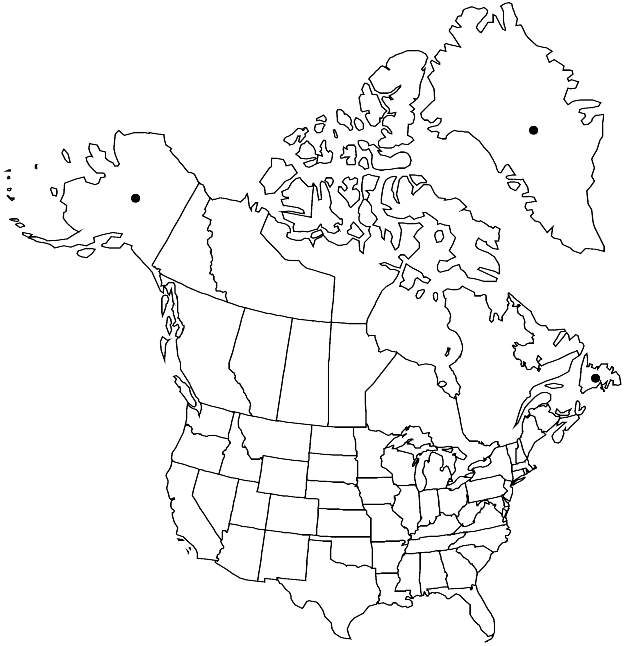Brachytheciastrum trachypodium
Arctoa 11: 260. 2003.
Plants small, in dense tufts, green when young, yellowish golden with age. Stems to 4 cm, creeping, terete-foliate, not julaceous, regularly or irregularly pinnate, branches to 6 mm, terete- or rarely subcomplanate-foliate. Stem leaves erect or somewhat erect-spreading, moderately to densely arranged, somewhat flexuose, ovate-lanceolate, not plicate, 1.2–1.6 × 0.3–0.5 mm; margins plane or recurved at places (more commonly at base), serrulate to base, sometimes indistinctly so to subentire; apex gradually long-acuminate, acumen ± falcate or occasionally straight; costa to 40–70% leaf length, usually thin distally, terminal spine absent or small; alar cells subquadrate, 10–13 µm wide, region small, of 4–6(–8) × 4–6(–8) cells, distinctly to moderately gradually delimited; laminal cells linear, 50–90 × 6–9 µm; basal cells shorter, 9–12 µm wide, indistinctly delimited from distal cells. Seta brown, 1.2–2 cm, rough. Capsule horizontal to somewhat pendent, brown, ovate to elongate, to 1.6 mm; endostome basal membrane 1/3–1/2 endostome length, cilia as long as segments. Spores 15–21 µm.
Habitat: Soil, rock
Elevation: low to moderate elevations (0-1200 m)
Distribution

Greenland, Nfld. and Labr. (Nfld.), Alaska, n Eurasia.
Discussion
Brachytheciastrum trachypodium is circumscribed here in a broad sense. The species was described from central Europe where it is represented by medium-sized plants with closely imbricate foliage. Plants from Scandinavia, Ural Mountains, Central Asia, and Siberia usually have narrower, long-acuminate leaves. They are linked to B. trachypodium because of their larger spores and relatively thin costa. Plants from Alaska are similar to the Siberian plants, whereas some collections from Greenland agree better with Central European populations. They are distinguished from B. velutinum mainly by the larger spores. This is not an especially helpful character as sporophytes are not always present and as range of spore size somewhat overlaps between species. In dubious cases in subarctic regions, the short costa ending mostly without a spine is best used for separation of sterile material of B. trachypodium.
Selected References
None.